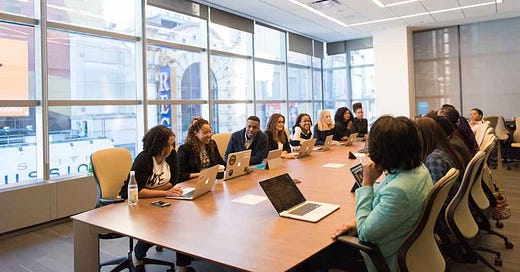Guide to Crafting Impactful Grant Proposals
Grant proposals are a critical aspect of research and academic careers, acting as the gateway to funding for transformative projects. For researchers, particularly women of color navigating systemic barriers in academia, crafting a compelling grant proposal can mean the difference between making a meaningful impact and shelving a groundbreaking idea due to lack of support.
Sistah Scholars exists to bridge this gap, offering expert guidance and resources to help you craft competitive grant applications that unlock funding opportunities. This article explores the key elements of a successful grant proposal and how Sistah Scholars empowers researchers to secure the funding they deserve.
The Anatomy of a Grant Proposal
Writing a grant proposal can feel daunting, especially for scholars juggling multiple responsibilities. Breaking it into essential components, however, makes the process more manageable and increases your chances of success. Here are the fundamental building blocks:
Elements of a Grant Proposal
Writing a grant proposal is not a one-size-fits-all process. Different funding opportunities—from small research fellowships to large-scale institutional grants—may have vastly different requirements. The following key components serve as a universal framework, but understanding the details of specific grant applications is critical for success.

1. Rationale: Why is Your Project Important Right Now?
The rationale is the heart of your proposal and lays the foundation for why funders should invest in your project. It must be compelling enough to convince reviewers that your research addresses a critical need.
Start with urgency: Address why the topic is pressing in today’s context.
Cite evidence: Use reliable data or prior research to demonstrate the real-world relevance of your project.
Align with funder goals: Show how your proposal meets the specific objectives of the funding body.
For example, Independent Scholars might focus on how their project fills a unique research gap, while Early Career Researchers can leverage the opportunity to establish themselves as innovators in their field.
2. Budget: A Transparent Breakdown of Where the Funds Will Go
Funders are meticulous about how their money will be spent, and your budget must reflect both accuracy and practicality. A well-crafted budget should:
Itemize expenses: Break down categories like salaries, materials, travel, and administrative costs.
Justify costs: Explain why each expense is necessary to achieve the project goals.
Include shared funds: Highlight how a portion of the funds might support your institution’s infrastructure, if applicable.
In cases where scholars apply for salary-replacement grants, it’s critical to note that funds are often shared with the university. This partnership ensures that universities provide scholars with administrative support, such as budgeting experts and research teams, which enhances the quality of grant applications.
3. Impact: What Will the Grant Achieve?
Funders want to know how their money will create meaningful change. Your impact statement should be measurable, relevant, and aligned with the funder’s mission.
Define success: State clear deliverables and milestones, such as publications, policy changes, or technological advances.
Address broader implications: Explain how your research will benefit society or your specific field of study.
Measurable goals: Use metrics or timelines to provide clarity on what success looks like.
For instance, Postdoctoral Scholars applying for grants with international funders like the ESRC or Sir Halley Stewart Trust must articulate not just academic outcomes but also the societal relevance of their projects.
4. Tone: Practical, Persuasive, and Professional
The tone of your proposal should reflect confidence, clarity, and alignment with academic standards. Tailor your language to your audience:
Be concise: Reviewers often have limited time; get to the point without oversimplifying.
Show confidence: Emphasize your qualifications, but avoid overpromising.
Balance emotion and evidence: Your passion for the project should shine through, supported by data and well-reasoned arguments.

For Early Career Researchers or Independent Scholars, this can be an opportunity to highlight their unique perspectives and demonstrate their readiness to take on a significant research project.
5. Length: Some Grants Require Longer Proposals
While many grant applications are concise, certain competitive grants, like the ESRC or Sir Halley Stewart Trust, require significantly longer submissions—sometimes exceeding 20 pages when application forms and supporting documents are included. These detailed applications may include:
Comprehensive timelines: Outlining milestones over several years.
Institutional partnerships: Explaining how funds will be distributed and shared with the university.
Detailed methodologies: Offering granular details about your approach to research or program delivery.
Universities play a critical role in this process, especially for larger grants. If a university agrees to partner with a scholar, they often provide:
A research team: Including a Research Director and colleagues who offer feedback and guidance.
Administrative support: Experts who assist with preparing budgets and navigating grant submission portals.
Institutional resources: Access to facilities and infrastructure that can enhance your proposal.
While these arrangements often involve universities retaining a portion of the funding to cover their expenses, they significantly improve grant success rates. Many universities boast a 90%+ success rate with such grants because they actively work with scholars to strengthen proposals.
Amanda Golden-Peace
The Misogynoir to Mishpat (M2M) Research Network © 2025




